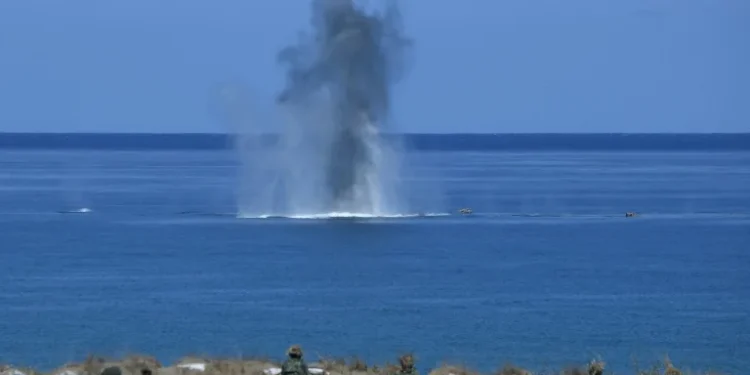The US Army deployed the mid-range missile system in the northern Philippines earlier this year for annual joint military exercises with its longtime ally, and decided to leave it there despite criticism by Beijing that it was destabilising to Asia.
Since then, it has been used by Philippine forces to train for its operation.
“It is planned to be acquired because we see its feasibility and its functionality in our concept of archipelagic defence implementation,” Philippine Army chief Lieutenant-General Roy Galido told a news conference.
“I’m happy to report to our fellow countrymen that your army is developing this capability for the interest of protecting our sovereignty,” he said, adding the total number to be acquired would depend on “economics”.
The presence of the US missile launcher in the northern Philippine had angered Beijing, whose navy and coast guard forces have engaged in escalating confrontations in recent months with the Philippines over disputed reefs and waters in the South China Sea.
Beijing claims almost the entire South China Sea despite an international ruling that its assertion has no legal basis.
As a rule, it takes at least two or more years for the Philippine military to acquire a new weapons system from the planning stage, Galido said, adding it was not yet budgeted for 2025.
It took five years for Manila to take delivery of the BrahMos cruise missile last year, he added.
– ‘Project force’ –
The land-based “mid-range capability” Typhon missile launcher, developed by US firm Lockheed Martin for the US Army, has a range of 300 miles (480 kilometres), though a longer-range version is in development.
Galido said the Typhon system would enable the army to “project force” outwards up to 200 nautical miles (370 kilometres), which is the limit of the archipelago nation’s maritime entitlements under the United Nations Convention on the Law of the Sea.
“You have to take note of the fact that at 200 nautical miles there is no land there and the army cannot go there,” he said.
“We need to contribute to this (defence of Philippine interests) by having this platform to be able to assist the primary major service that would focus on maritime and air domain,” Galido added.
Under that scenario, the Typhon platform “will protect our floating assets”, he said, a reference to ships of the Philippine navy, coast guard and other vessels.
Chinese Defence Minister Dong Jun warned in June that the Typhon deployment was “severely damaging regional security and stability”.
Galido dismissed the criticism against the Typhon system in the Philippines.
“We should not be bothered by others’ seeming insecurities because we don’t have any plans to go outside of our country’s interests,” he said.
The Chinese embassy in Manila did not immediately respond to an AFP request for comment.
AFP




















